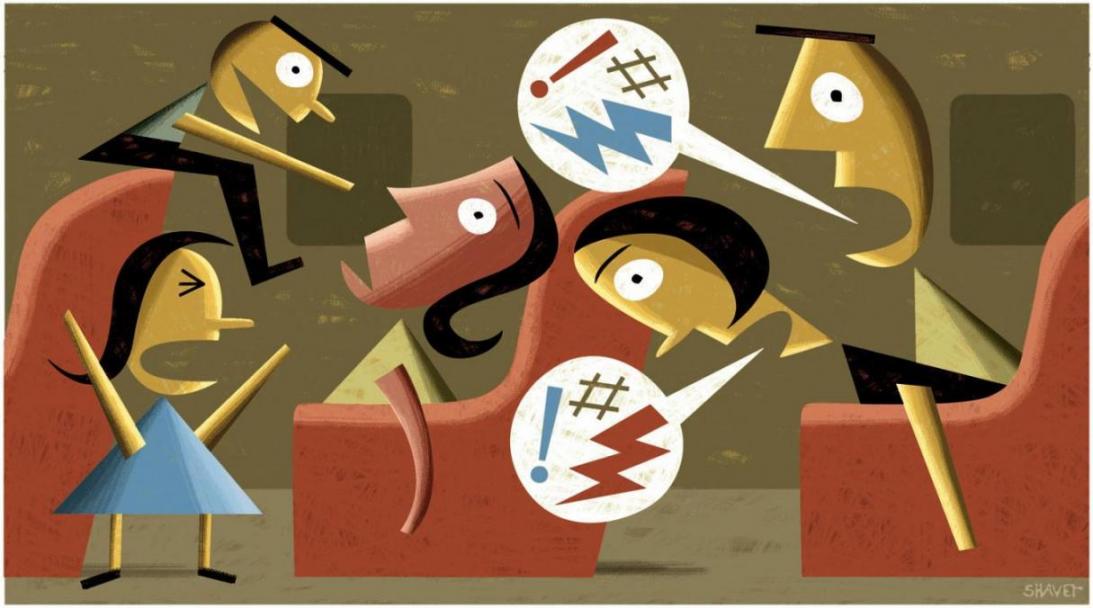Earlier this month, a hot water attack forced a China-bound Thai AirAsia flight to return to Bangkok, angering not just the passengers on board but also the Chinese government and public, CNN reported. Shortly after flight FD9101 took off from Bangkok for the eastern Chinese city of Nanjing, a quarrel ensued between 4 Chinese passengers and a flight attendant, and as it dragged on, one of the disputing passengers threw hot water on the flight attendant’s back, witnesses said.
In a cell phone video taken by a fellow passenger and posted online, a man in a gray T-shirt and jeans can be heard shouting in Mandarin: “...You caused all the problems and I’m going to blow up the plane!” The plane - carrying 174 passengers and six crew members - hadn’t even left Thai airspace before it turned around, for the captain deemed the passengers were in danger.
Air Rage on the Rise
In recent years, the media have reported numerous dramatic incidents involving irate passengers, ranging from blocking moving aircraft on an active runway to fistfights with airport employees.
After the latest incident, the National Tourism Administration of China stated that actions of the four passengers had “severely damaged the overall image of Chinese people” and demanded local authorities to review the case.
Etiquette Violators
People do disgusting and disruptive things on airplanes. They show little regard or patience for fellow passengers and their needs. Inconsiderate behavior on the part of passengers can make air travel an unpleasant hassle for everyone. The 2014 annual Expedia Airplane Etiquette Study ranked the top on-board etiquette violators as reported by passengers:
- rear seat kicker: cited by 67% of study respondents
- inattentive parents: 64%
- the aromatic passenger: 56%
- the audio insensitive (talking or music): 51%
- the boozer: 50%
- chatty Cathy: 43%
The International Air Transport Association (IATA) received more than 8,000 complaints about unruly passengers in 2013. According to the Conversation (theconversation.com).
The Federal Aviation Administration defines air rage as a passenger’s explosive and unpredictable behavior occasioned by congested travel, unexpected delays, or negative interactions with other passengers and flight personnel. From this point of view, the list of etiquette violators doesn’t really fall within the air rage definition. But from a psychological point of view, the story is different.
Silent Epidemic
What safety and health officials call “explosive air rage” spills out into the public sphere for everyone to witness; these are the verbal attacks on passengers and personnel by someone yelling profanities, threats, complaints, and insults. “Mental air rage,” on the other hand, is emotional and private. Most people try to suppress mental air rage and prevent it from showing publicly for various reasons including fear, embarrassment, rational self control or compassion.
Mental air rage is just one aspect of the stressed out feelings that go along with the uncertainties and negative emotions of travel and transportation. This charged negative emotional background exists below the surface of consciousness and can lead to a simmering feeling of resentment throughout the travel experience.
Changes for the Worse
Airlines contribute to harsh and unfriendly traveling conditions when their economic policies create an artificial climate of scarcity, competition and enmity among passengers.
The list of contributors to the deteriorating environment for airline passengers is a familiar one. Airlines have reduced legroom and seat width. Checked bag fees encourage passengers to bring more and more on board, leading to battles over limited storage space. The elimination of in-flight meals causes passengers to bring their own odorous food. Policies on personal electronic devices are unclear and inconsistently enforced.
All of these factors increase the mental load on travelers. From there it is a small step for inconsiderate actions to trigger negative and anti-social behaviors in waiting rooms, airplanes and lavatories. For instance, entering a lavatory on board an airplane and finding it in a disgusting used condition creates an emotional and psychological shock. Travelers are not only repelled and annoyed, but also feel aggressed against. This stressful situation can ratchet up the mental air rage.
enlightened techniques
A research by a professor of Psychology at the University of Hawaii Leon James suggests some ways airlines can help prevent these incidents as well, via more enlightened crowd management techniques:
- When people are waiting, they should be provided with a continuous stream of updated information every five minutes via a variety of formats and media: electric board, signs, announcements, and face-to-face interactions.
- Elevate the importance of the traveler’s comfort whenever implementing changes. Apologize if decent seating is unavailable. Make up for it by giving something else in return so the traveler doesn’t feel cheated or neglected.
- Manage lines with more compassion. People shouldn’t stand in line when they can sit and wait. People shouldn’t have to compete physically with each other for an airplane seat.
- Follow compassionate principles to create a social group out of the anonymous people in the waiting room or on the airplane. Encourage discussion among the waiting people. Form a support group out of them so they can assist each other and give each other help, ideas, and support.
Airlines should train employees in techniques that can prevent air rage incidents in the first place as well as how safely to de-escalate episodes once they’ve begun. After all, air rage isn’t just another unpleasant aspect of traveling – it can put everyone onboard at risk.


